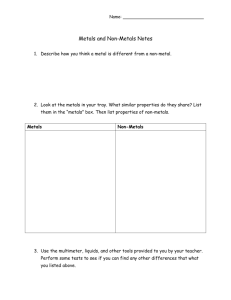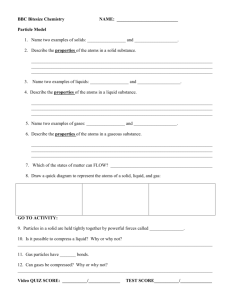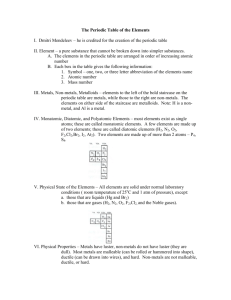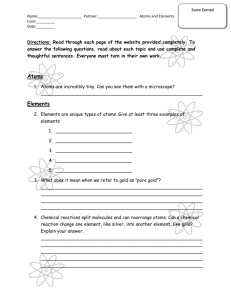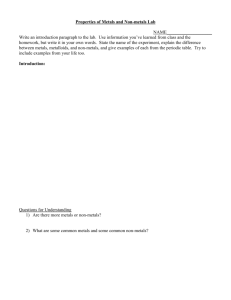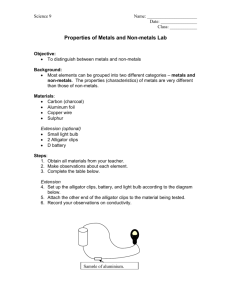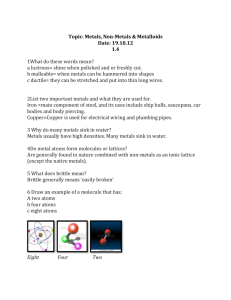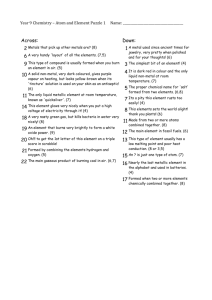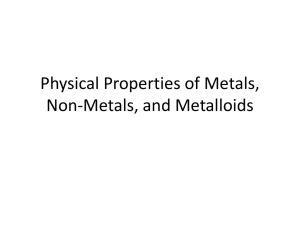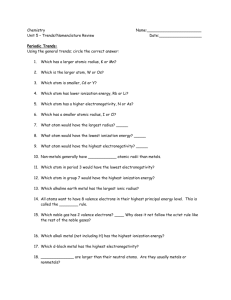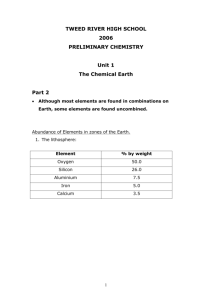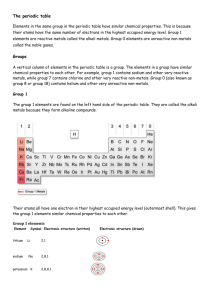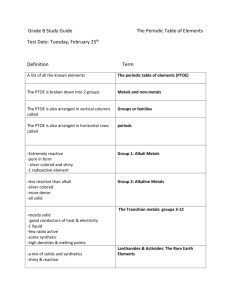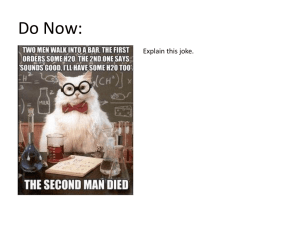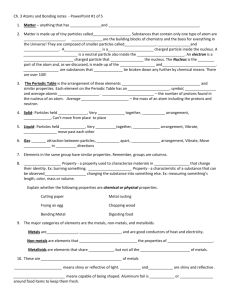Chemistry EOG Study Guide
advertisement
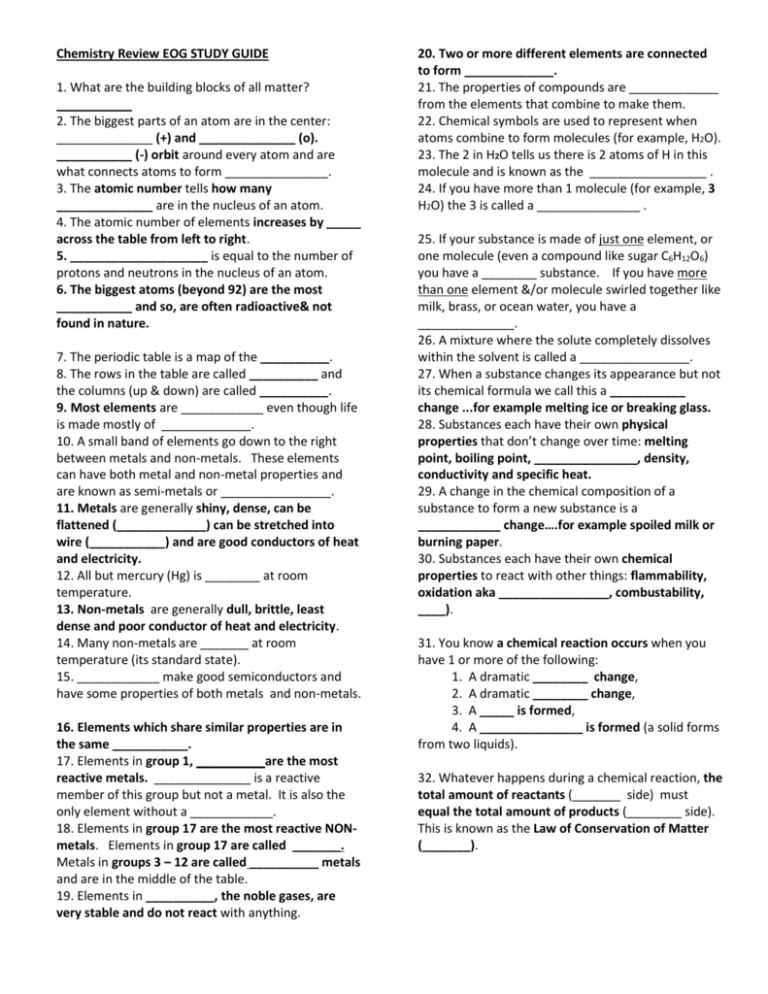
Chemistry Review EOG STUDY GUIDE 1. What are the building blocks of all matter? ___________ 2. The biggest parts of an atom are in the center: ______________ (+) and ______________ (o). ___________ (-) orbit around every atom and are what connects atoms to form _______________. 3. The atomic number tells how many ______________ are in the nucleus of an atom. 4. The atomic number of elements increases by _____ across the table from left to right. 5. ____________________ is equal to the number of protons and neutrons in the nucleus of an atom. 6. The biggest atoms (beyond 92) are the most ___________ and so, are often radioactive& not found in nature. 7. The periodic table is a map of the __________. 8. The rows in the table are called __________ and the columns (up & down) are called __________. 9. Most elements are ____________ even though life is made mostly of _____________. 10. A small band of elements go down to the right between metals and non-metals. These elements can have both metal and non-metal properties and are known as semi-metals or ________________. 11. Metals are generally shiny, dense, can be flattened (_____________) can be stretched into wire (___________) and are good conductors of heat and electricity. 12. All but mercury (Hg) is ________ at room temperature. 13. Non-metals are generally dull, brittle, least dense and poor conductor of heat and electricity. 14. Many non-metals are _______ at room temperature (its standard state). 15. ____________ make good semiconductors and have some properties of both metals and non-metals. 16. Elements which share similar properties are in the same ___________. 17. Elements in group 1, __________are the most reactive metals. ______________ is a reactive member of this group but not a metal. It is also the only element without a ____________. 18. Elements in group 17 are the most reactive NONmetals. Elements in group 17 are called _______. Metals in groups 3 – 12 are called __________ metals and are in the middle of the table. 19. Elements in __________, the noble gases, are very stable and do not react with anything. 20. Two or more different elements are connected to form _____________. 21. The properties of compounds are _____________ from the elements that combine to make them. 22. Chemical symbols are used to represent when atoms combine to form molecules (for example, H2O). 23. The 2 in H2O tells us there is 2 atoms of H in this molecule and is known as the _________________ . 24. If you have more than 1 molecule (for example, 3 H2O) the 3 is called a _______________ . 25. If your substance is made of just one element, or one molecule (even a compound like sugar C6H12O6) you have a ________ substance. If you have more than one element &/or molecule swirled together like milk, brass, or ocean water, you have a ______________. 26. A mixture where the solute completely dissolves within the solvent is called a ________________. 27. When a substance changes its appearance but not its chemical formula we call this a ___________ change ...for example melting ice or breaking glass. 28. Substances each have their own physical properties that don’t change over time: melting point, boiling point, _______________, density, conductivity and specific heat. 29. A change in the chemical composition of a substance to form a new substance is a ____________ change….for example spoiled milk or burning paper. 30. Substances each have their own chemical properties to react with other things: flammability, oxidation aka ________________, combustability, ____). 31. You know a chemical reaction occurs when you have 1 or more of the following: 1. A dramatic ________ change, 2. A dramatic ________ change, 3. A _____ is formed, 4. A _______________ is formed (a solid forms from two liquids). 32. Whatever happens during a chemical reaction, the total amount of reactants (_______ side) must equal the total amount of products (________ side). This is known as the Law of Conservation of Matter (_______). 33. Circle which chemical reaction does NOT follow the Law of Conservation of Matter: Cl2 + 3KNi → 2KCl + Ni2 2Na + MgF2 → 2NaF + Mg 3Fe + 4H2O →Fe3O4 + 4H2 Balance the following equations: 34. H + O2 H2O 35. CO + O2 CO2 Draw a Bohr Diagram and Lewis Dot Structure for the following: 36. Sodium (Na) 37. Chlorine (Cl) 38. Nitrogren (N)
